Gas Plant Collection
They’re tucked away on an otherwise disused siding, way back behind a huge maze of pipes, valves and vessels and for the most part were well hidden from view. Here, at a recently decommissioned gas plant a little south of Calgary, a most amazing collection of vintage railway equipment. With the facility due to be razed all this railway stuff will need to go, and since our visit back in June 2018 some has, but then and in the meantime what’s left is safe and sound inside and watched over by security.
On site one spring day, we don full safety gear, H2S sensors included (deadly stuff this – it’s a “sour” plant and even closed there’s dangers). Then there’s a briefing and we’re given free run to explore for a short half an hour or so, watched over by a Alberta Energy Regulator Staff (a governmental body). They’ve taken control of the plant for the time being and will oversee its shutdown and the eventual removal of all equipment. The operation dates from the mid-1980s so is not terribly old.
Joining us this adventure is good buddy Jason Sailer. We understand his photo-essay of the gas plant collection will appear sometime in 2019 in Branchline Magazine, a great publication BTW and one you should search out. We’ve contributed an article or two to them the last couple years.
Let’s look at what’s here…
At the far south end, there’s an Ohio Locomotive Crane, ex-CPR #414218. Able to move on it’s own it can even pull a couple cars and would be used for track and right of way maintenance. It can be outfitted with a hook for lifting, a magnet for gathering up metal bits, or even can function with some mods, as a pile-driver. It’s wore lots of hats. This one is from 1979 and only recently was retired by the railway. Just a few years ago, we spotted it at work out in the wild.
More and more, the railways are relying on road (or road/rail) type cranes to do work and retiring those that are rail only.
A track over it’s CPR Caboose #434710. Dating from 1981, it was one of the last of these cars built for the company – not long after they went caboose-less (or for old timers, van-less). Still they hung on to a few for various reasons – for work train service or use as “shoving platforms”, a place for a crew member to keep a watch on the track ahead during extended reverse moves where the locomotive is pushing and not leading. This one was active on the CPR roster at least into about 2010 or so. It’s well worn and of course someone tagged it.
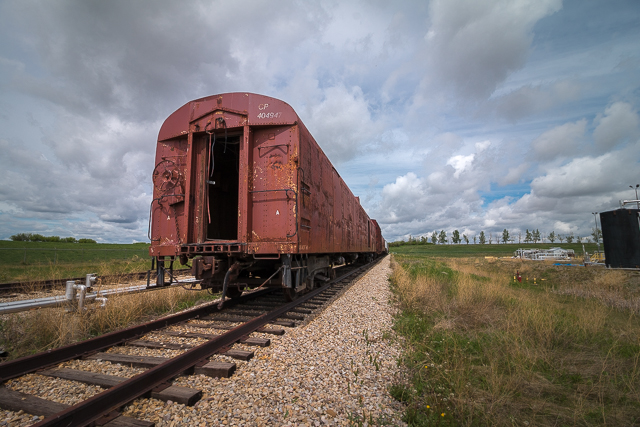
At a closed gas plant near Calgary…
While red was the traditional caboose colour, CPR went yellow in the latter 1960s.
Up by the loading racks, another Caboose, this one ex-CPR #434550. It’s near identical to the other but is few years older. CPR built these themselves, some using kits supplied by commercial rail car builders. This one was also active till at least ten years ago or so and also shows the scars of heavy use and graffiti.
Keeping it company, a lightweight branchline locomotive. It’s a model RS23 and came from the firm Montreal Locomotive Works. CPR owned close to three dozen of them, built circa 1959 and (mostly) used them on lightly built branch lines in Northern Saskatchewan. This here one is #8017.
These are rather unique beasts, very squat and looking much like a switcher but able to operate in road service. And they weight next to nothing – 180k pounds for this one, up to 235k pounds for some others in the class verses over 400k pounds for many modern locomotives.
The CPR retired #8017 in the early 1990s and sold it to a fertilizer firm (Saskferco, Belle Plain) who used it up until about 2008. We understand it’s mechanically complete, or at least close to that. The RS23 sold to two other customers but CPR owned the majority of them. This was a Canadian only model (built 1959-1966) and was not produced by MLW’s parent firm American Locomotive Company of New York State. It was a rare one with a very specialized purpose.
Not sure what that gas can thingy on the bogies (trucks) is. Flange oiler? Experts? Anyone?
Along here are the loading platforms. They used to ship out molten or liquid sulphur (a by-product of sour gas) and we believe also propane, all in tank cars. Not sure when they stopped doing this, but it’s suggested at least a decade or more ago. So with that the siding here became a good secure place to store historically valuable equipment and soon after all of what’s seen in this post was brought in for storage (so here for about a decade). And for no charge I understand. Spare sidings are a hard find. Secure sidings doubly so. Free ones, it’s a miracle.
Up the tracks, a baggage car, ex-CPR #404947 dating from 1950. Most recently it was used as a rolling material storage car for maintenance crews. It was built by National Steel Car in Hamilton Ontario a firm dating back over a century and still doing a good business. They don’t make cars for passenger trains anymore, just for freight.
Next down the line, an “auto” boxcar built in 1938 for shipping of new vehicles, ex-CPR #404097 (former #295524). They used to jam four autos, typically, inside these. Now the railways specialized cars able to hold up to a couple dozen vehicles tops (depending). The auto loading equipment inside this boxcar is gone which suggests it was converted to general freight service once those modern “auto-racks” came into use (starting in the early 1960s). Later still it suggested it was used by the maintenance of way department. Maker Canadian Car and Foundry (Montreal) built this one. That firm closed in the early 1960s and was a big and prolific maker for many decades.
Now another baggage car, ex-CPR #404935. It dates from 1938 and like the other came from National Steel Car and post retirement from passenger train service found work with the maintenance of way department. Many old cars found a post retirement home there and manged to survive into the modern era instead of being scrapped. Now they’re new fodder for museums.
There’s a flat car, just seen in one photo. It’s number #302881, ex-CPR from the early 1960s. It was last used by the maintenance of way department (naturally).
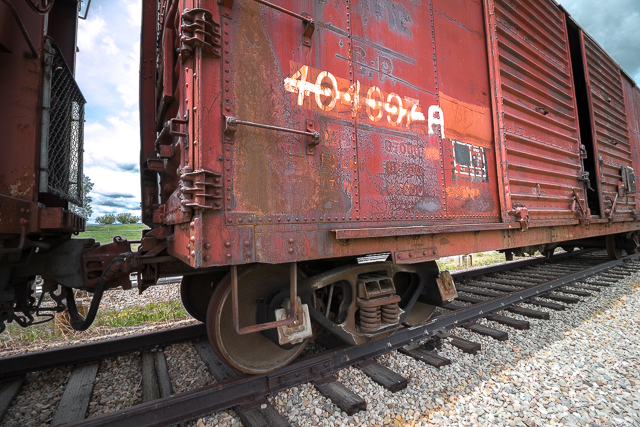
This 1930s era “auto” boxcar.
Many of what’s been seen so far were once owned by a now defunct museum group (see: Alberta 2005 Centennial Railway Museum – what’s going on?). With their demise, a nearby tourist railway (and good friends to Team BIGDoer) called Aspen Crossing has taken ownership. Adventures on that line: Aspen Crossing’s new locomotive gets delivered, Train Day at Aspen Crossing, Twilight Train and Things We Saw In Mossleigh.
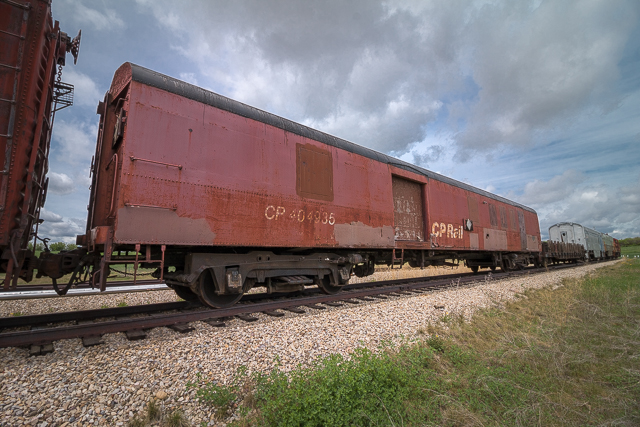
An ancient baggage car, ex-CPR.
Aspen has since moved these cars to their property.
Now it’s the most historically significant pieces. It’s gets real good now. Up first two Canadian Locomotive Company (Kingston Ontario), CFB16-4 “B” Units built under license from the Fairbanks Morse Company in the US. These are cabless so can only operate in the trailing position. Both date from 1953 and were CPR #4455 and #4456 respectively. Early on they were typically only mated with a matching “A” Unit CFA16-4 locomotive (or sometimes CPA16-4 passenger engines) but later were put into the regular pool of locomotives. While in service for the Canadian Pacific they could be found mostly roaming southern Alberta and BC (western sections were the much storied Kettle Valley Line).
In the early 1970s the pair, retired a couple years prior, were sold to Pacific Great Eastern out in BC. The company, later using the name BC Rail, or British Columbia Rail used them as “robot cars” and numbered as #RCC3 and #RCC4. The railway did a good business serving the interior of the province – their line ran from North Vancouver to Prince George and points north and hauled huge volumes of wood products in particular. Today Canadian National Railway operates these lines.
A robot car contained all the electronics and controls to allow unmanned mid-train locomotives to be used. Spreading out the power in a train allows for more precise control and longer consists. The things needed to do this now fit inside a locomotive, but back then took up huge space and a separate car was needed to house them. In the case of these locomotives, they were stripped of interior parts, engine, generator, etc, before having the robot equipment installed. BC Rail used them into about 1990.
These cars are now essentially empty inside. The owner was hoping to cosmetically restore one and mate it with a locomotive, CPA 16-4 CPR #4104 currently on display in Nelson BC (here, before it was moved: Under Wraps). But alas, that’s unlikely to come to fruition – a money thing – no one has it. This pair are only FM B Units left. In addition there’s two A Units, the one in Nelson spoken of and another out east in Ottawa. That’s it. There are no others.
By the way, we’ve come across these B Units before, long ago and stored on a grain elevator siding south of Calgary. See” DeWinton De Winton Dewinton.
One of the B Units wears what appears to be a Via Rail paint scheme. Via is Canada’s National Passenger Carrier and never owned it and instead appears in that guise in a film called “Narrow Margin” (1990). It’s not a great flick, but it’s got trains so can’t be all bad. And Via’s the carrier in the movie.
And last, and the one you’ve been waiting for, is a rare CLC H16-44. This is ex-CPR #8554 built in 1955 and retired some twenty years later. A google image search has it showing up in many photos while in service. It loved Southern BC. Mechanically it’s very similar to the B Units, but in a more practical Hood (open walkways) configuration. This one’s mechanically complete, or almost so. Many valuable and rare to source parts are stored off site under lock and key.
This is one of three H16-44s left (of about 300 made), with the other two residing in Mexico. It’s an amazing machine and can you say rare! Take in the photos showing all the little details.
If the funds can ever be secured, it’s hoped one day it could be brought back to life. These three, since the 1990s, have been owned by the Locomotive & Railway Historical Society of Western Canada. From 1975 to till picked up by the L&RHSoWC #8554 was kept by the CPR – they knew it was something special.
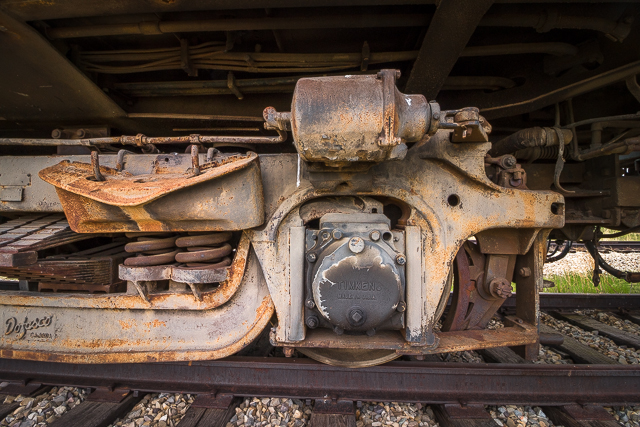
Baggage car bogie (truck) details.
Fairbanks Morse produced locomotives from the mid-1940s to the early-1960s. CLC was in business much longer, from the 1850s to the late 1960s and produced FM designs from 1951-1957. In the diesel era the rest of their output included small industrial locomotives. CPR was the last major line to operate FM designed locomotives, some lasting into 1975. In contrast most railways retired this make by the late ’60s
A small road/rail picker-equipped truck is the last thing seen. It’s a Cline Shuttle Wagon for small odd jobs along the line. We believe it’s from the 1970s. The lean is from a flat tires – these still support some of the weight even with the rail wheels down.
As we explore, a train passes in the background. Lucky timing. The plant is along the CPR’s Calgary to Lethbridge secondary line (Aldersyde Subdivision, built early 1910s). It sees a handful of movements per days, so is not super busy.
ACI labels were an early (and unreliable) barcode system used to keep track of cars and engines. CPR #8554 still shows one. Do not hump – always brings a chuckle – don’t put over the “hump” a railyard that uses gravity to classify cars. Cars are knocked about hard there.
We’ll be reaching out to the owner of the CLC/FM units to see what’s might happen down the road and we’ll post an update here (we last spoke with them just before going in the plant). They’ll have to find a new siding to store their collection I suppose and they need one in a plant or some secure place like this. Otherwise the vandals and souvenir hunters would run roughshod. Time will tell. And of course, we’ll be watching.
More collections…
Rail Equipment @ Katie’s Crossing.
Wandering the Alberta Railway Museum.
Class of ’63 – A CLC industrial.
If you wish more information on what you’ve seen here, by all means contact us!
Date: June, 2018.
Location: Mazeppa, AB.
Article references and thanks: Alberta Energy Regulator, Locomotive & Railway Historical Society of Western Canada, Canadian Trackside Guides, Jason Sailer.
BIGDoer.com was on site with permission.
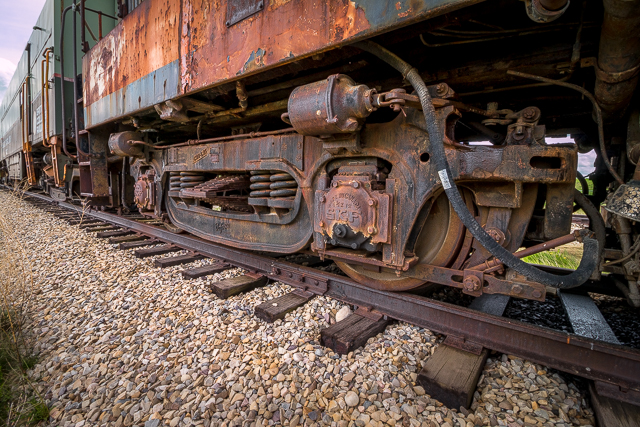
Locomotive bogie (truck) details.
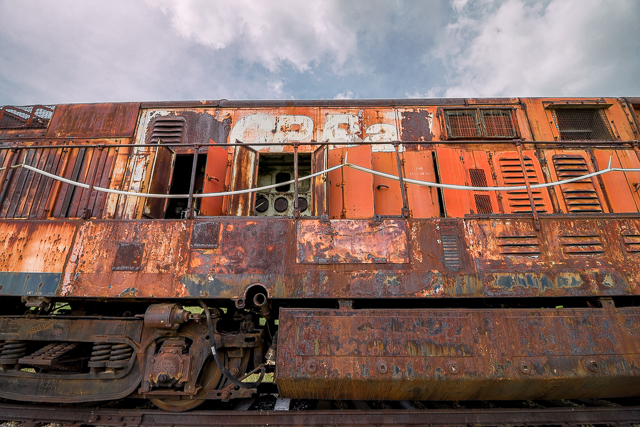
A glimpse of a rare beast.
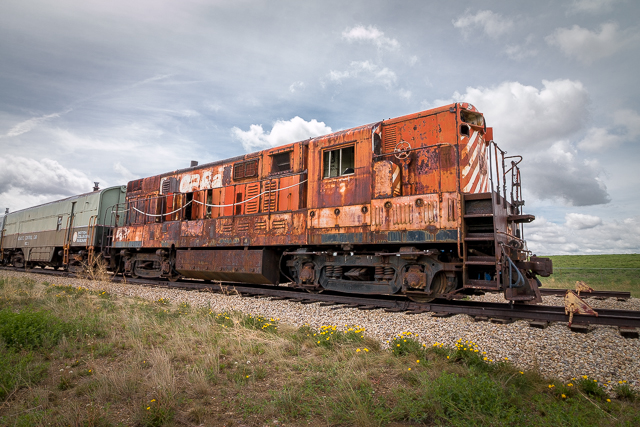
Introducing CPR #8554.
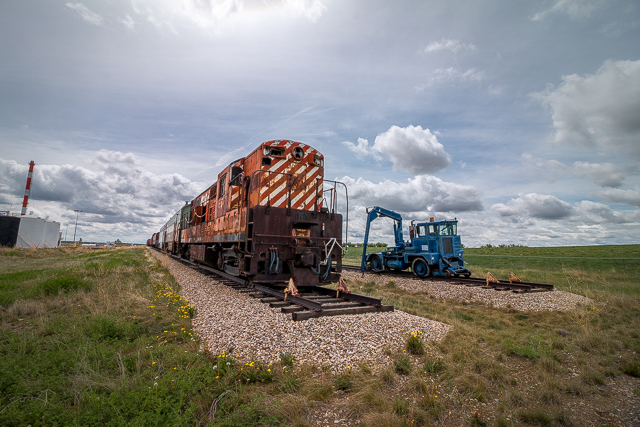
It”s a CLC/FM H16-44 from the mid-1950s.
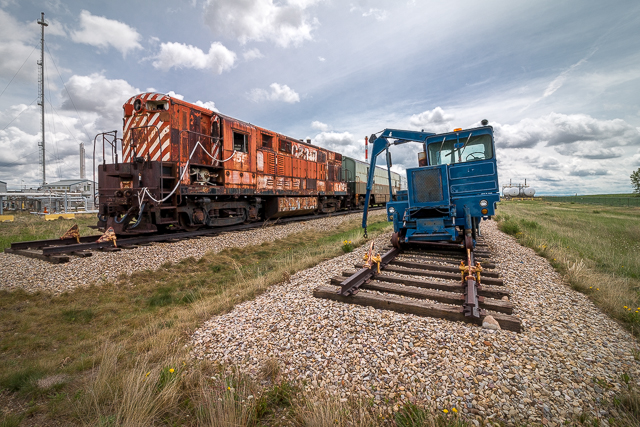
Little blue keeps it company.
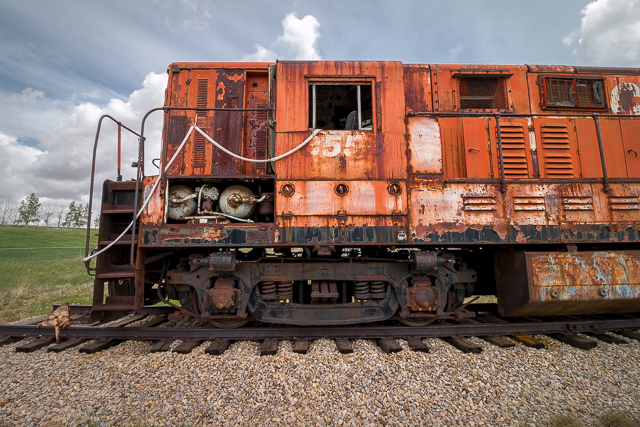
Cab details.
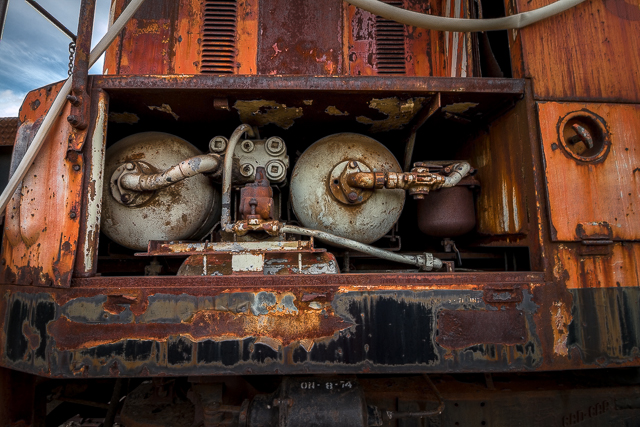
Braking equipment.
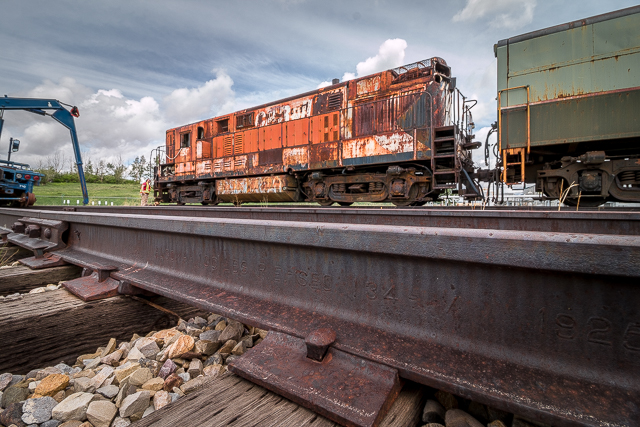
It’s property of an historic society.
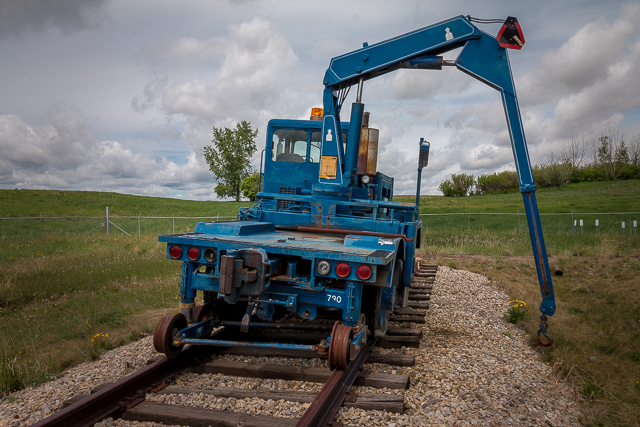
This little road/rail maintenance vehicle.
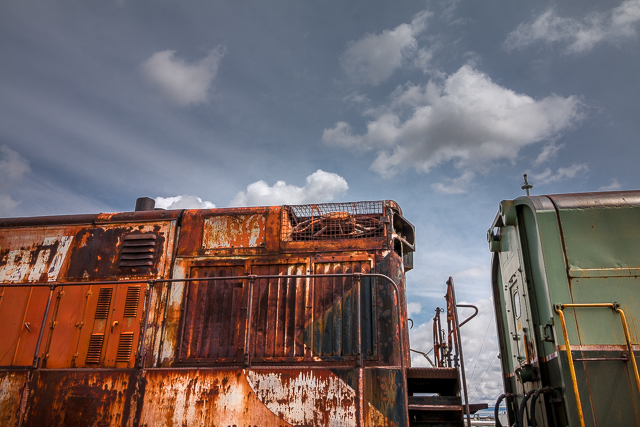
To keep it cool, the radiator end.
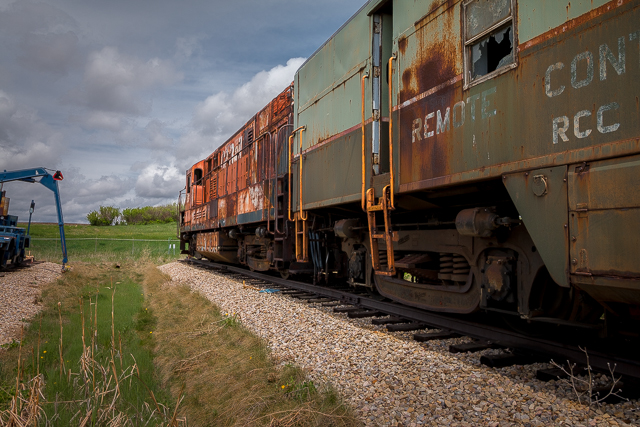
Next in line this CLC “B” unit.
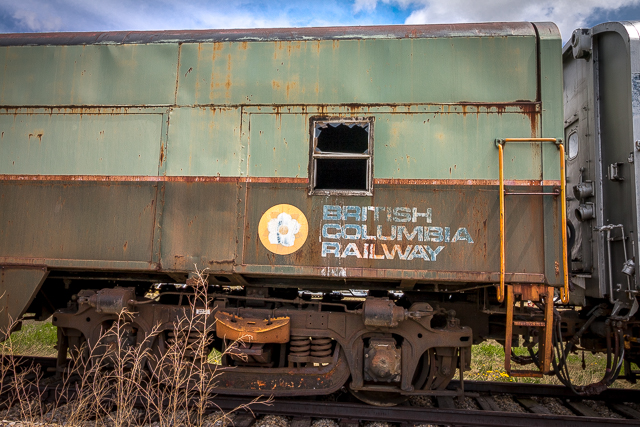
It last worked for BC Rail.
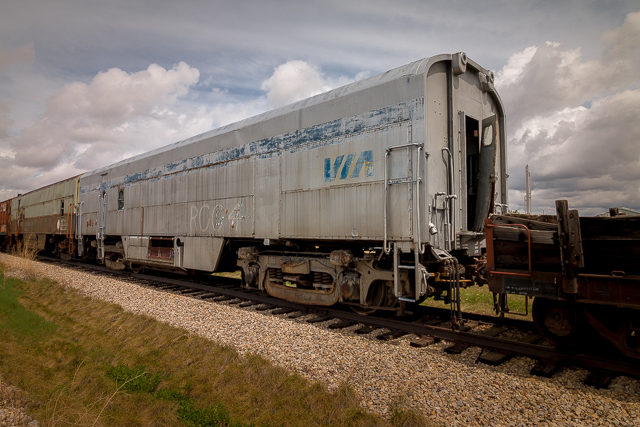
As seen in “Narrow Margin”.
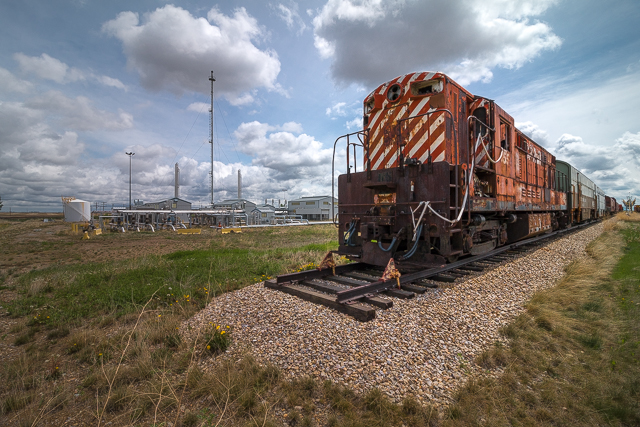
In back, the mothballed Mazeppa Gas Plant.
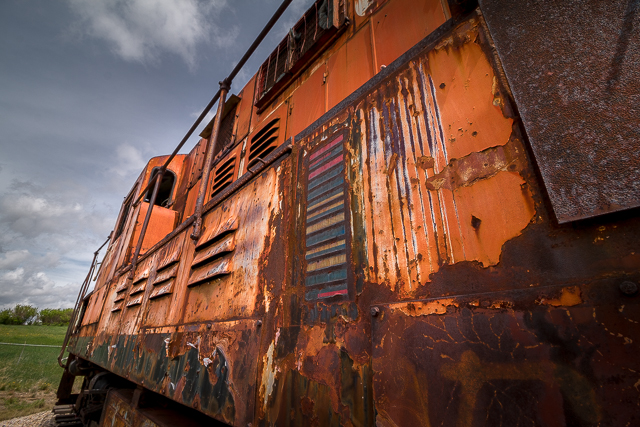
To track the locomotive, this “ACI” label.
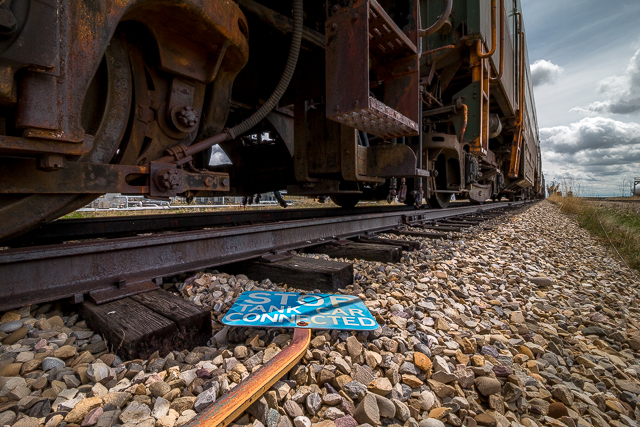
Stop, Tank Car Connected.
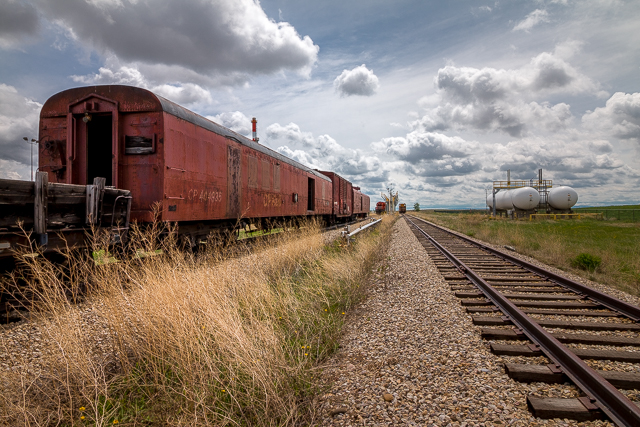
Lots has been moved out already.
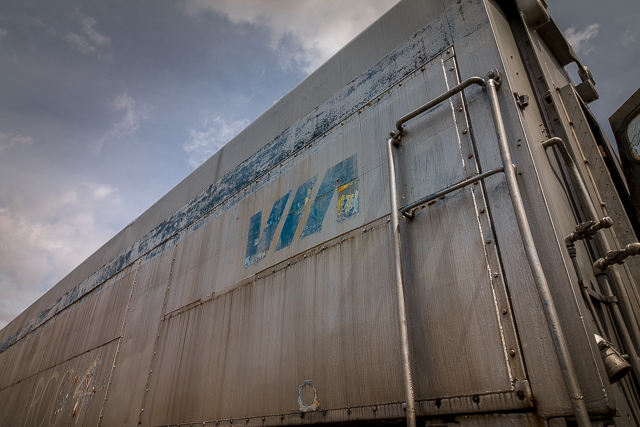
It never worked for Via.
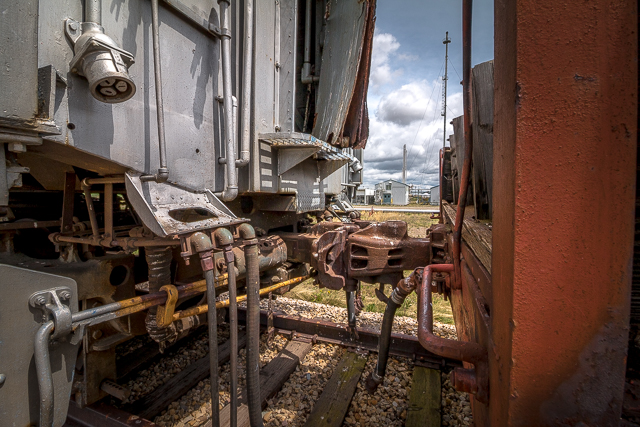
Couplers and hoses.
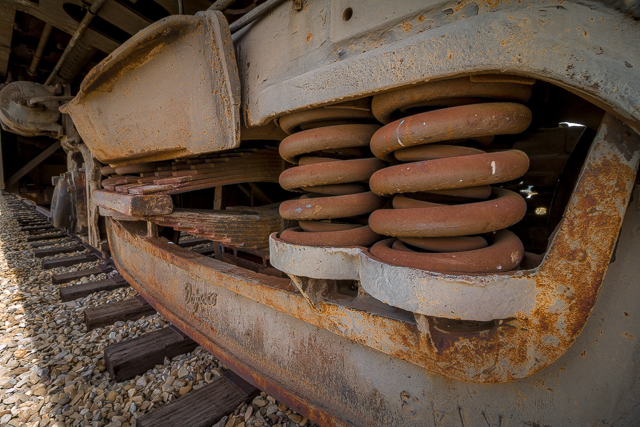
To smooth the ride.
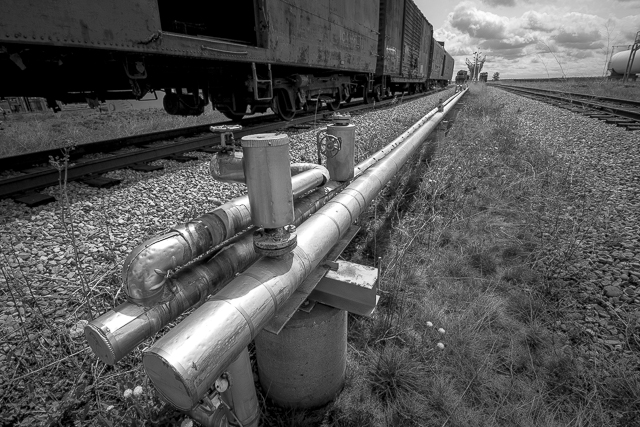
Disused rail car loading equipment.
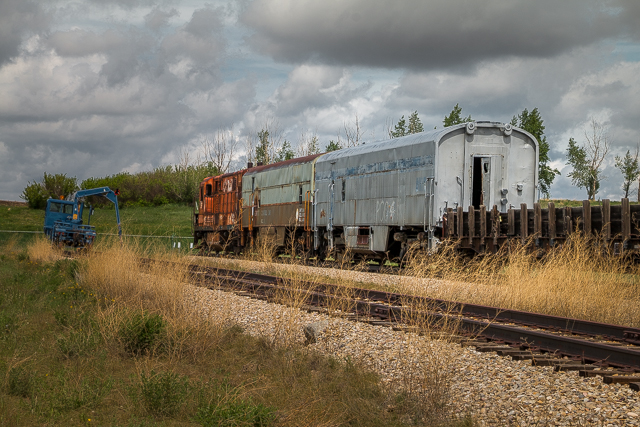
These three are very historically significant.
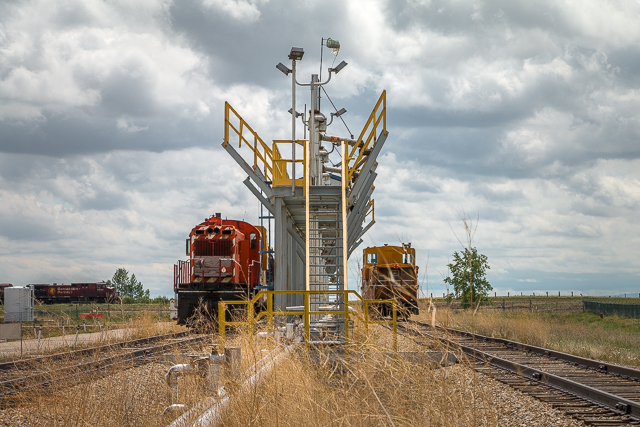
Former loading platforms – a train passes in back.
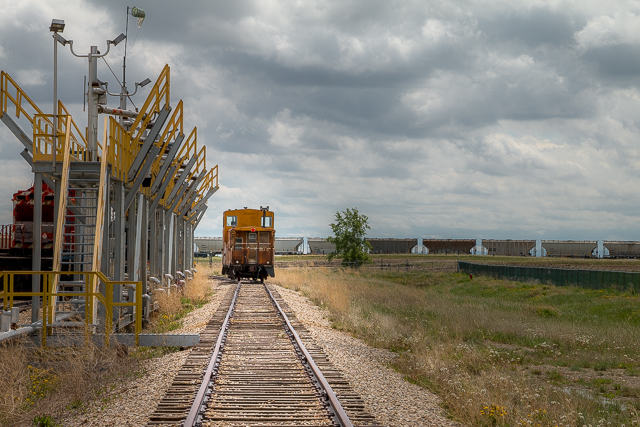
The plant sits along CPR’s Calgary to Lethbridge line.
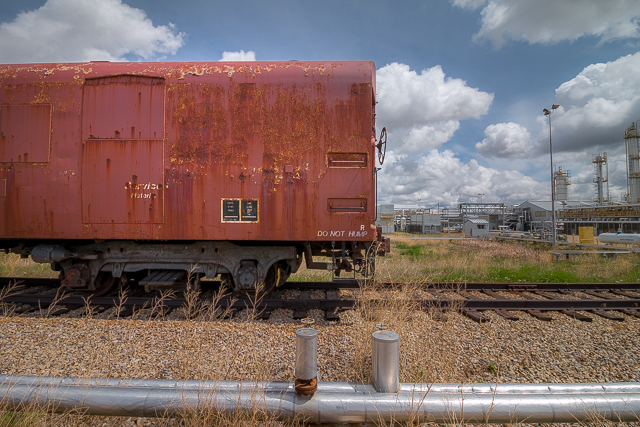
Do not hump…
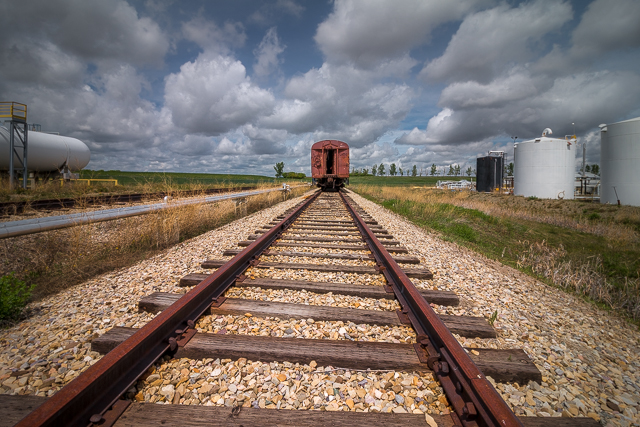
Moody skies.
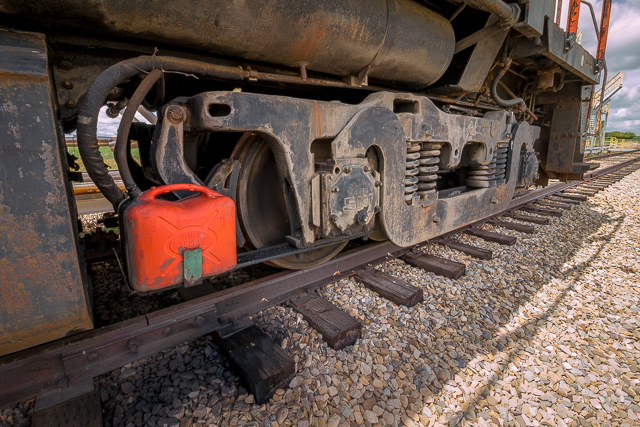
Under a lightweight.
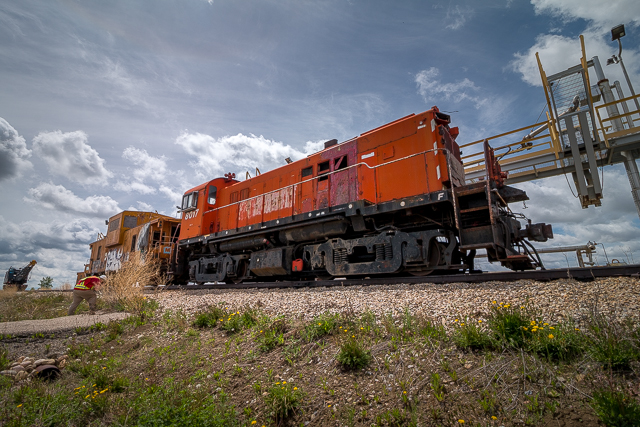
A late 1950s era MLW RS23 – who’s that over there?
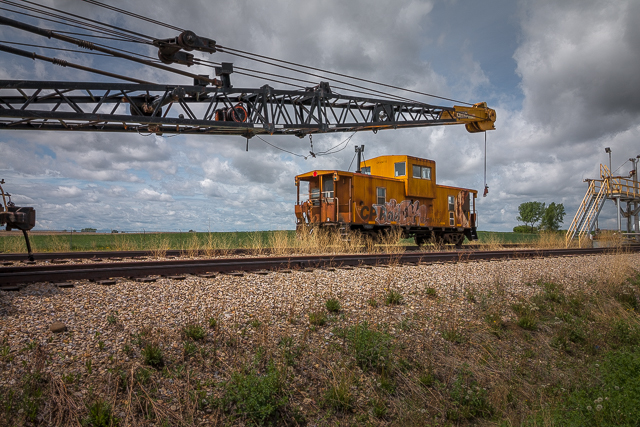
One of the last cabooses made.
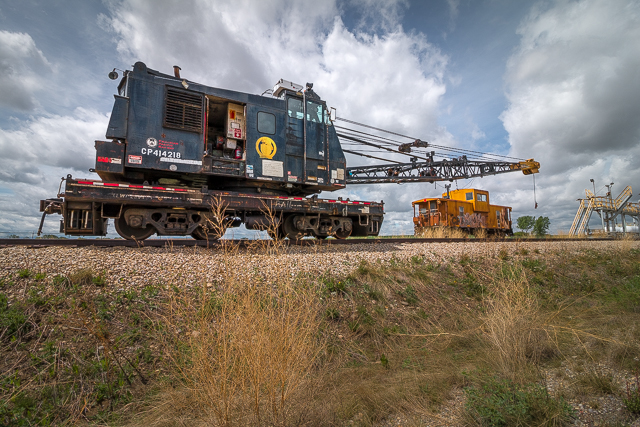
An “Ohio” Locomotive Crane.
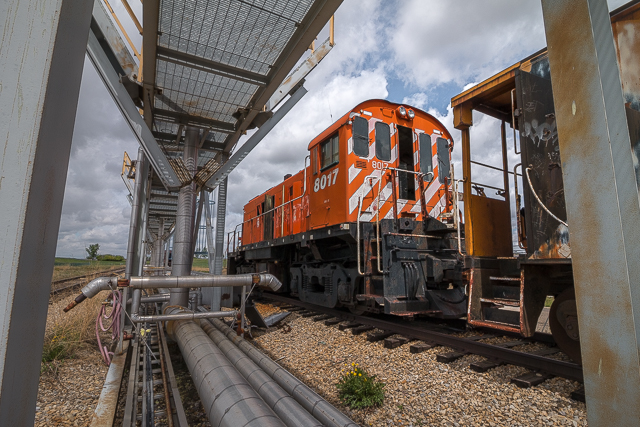
This locomotive could tread lightly.
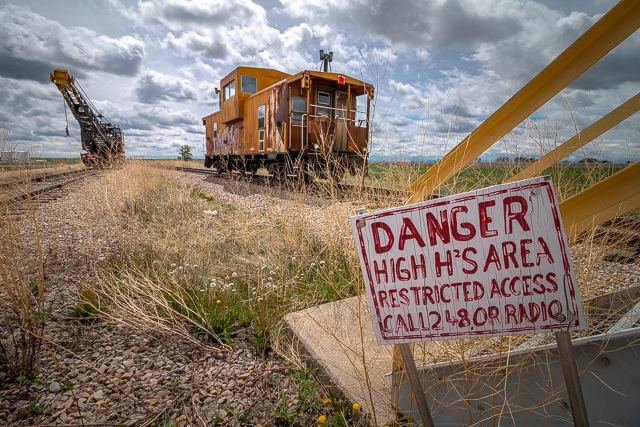
Once found at the tail end of every freight.
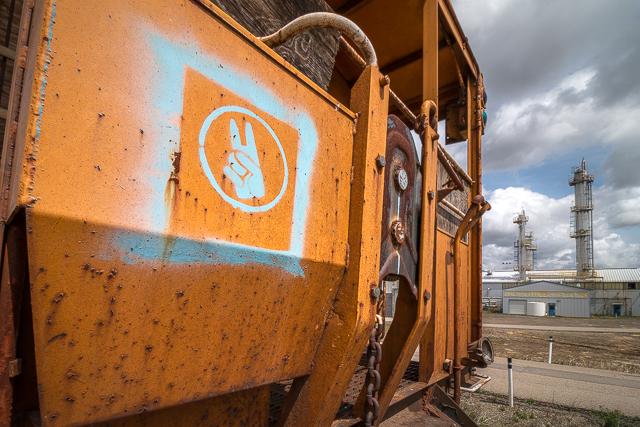
Peace out…
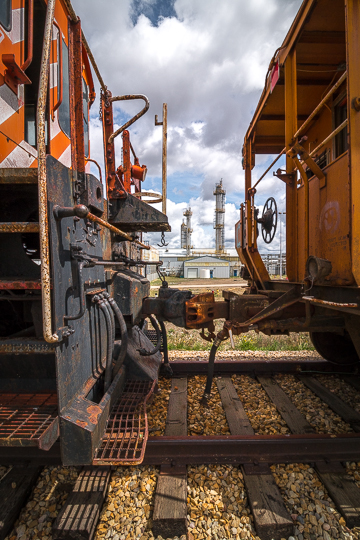
The place is eerily quiet.
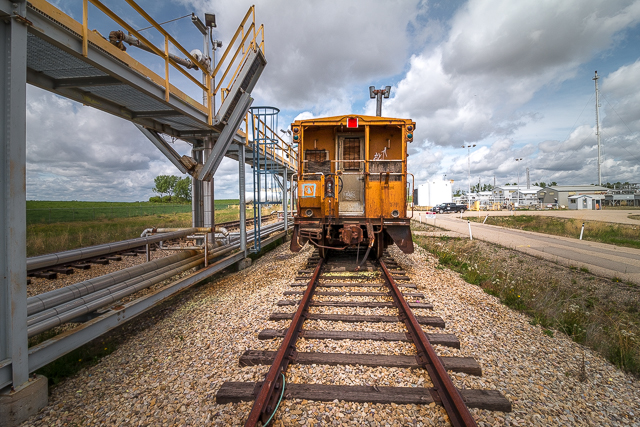
Tank cars used to be loaded here.
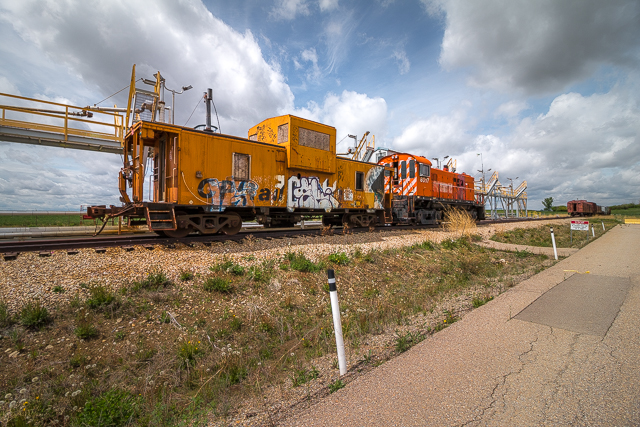
Different owners than the CLC locomotives.
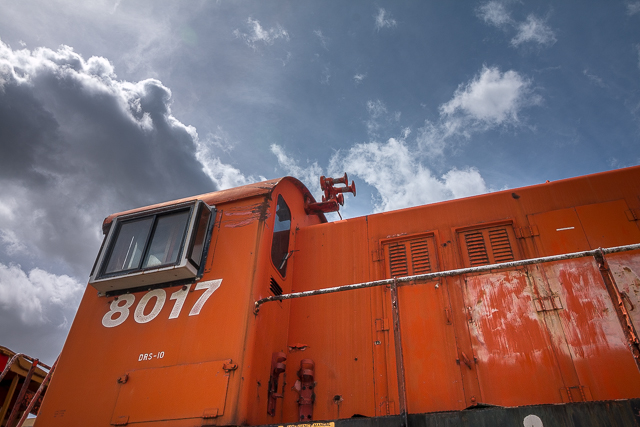
At home on lightly built branchlines.
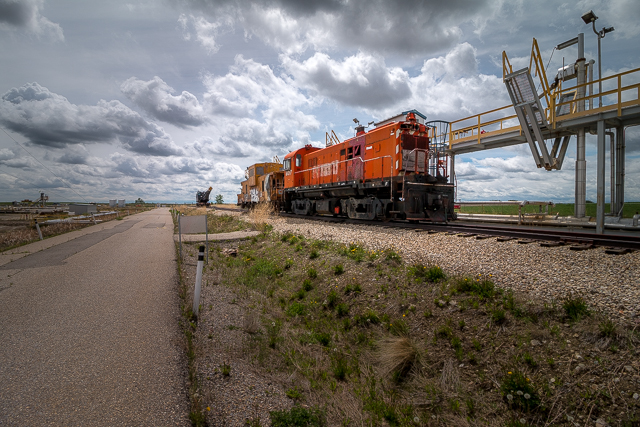
It last worked for the CPR in the early ’90s.
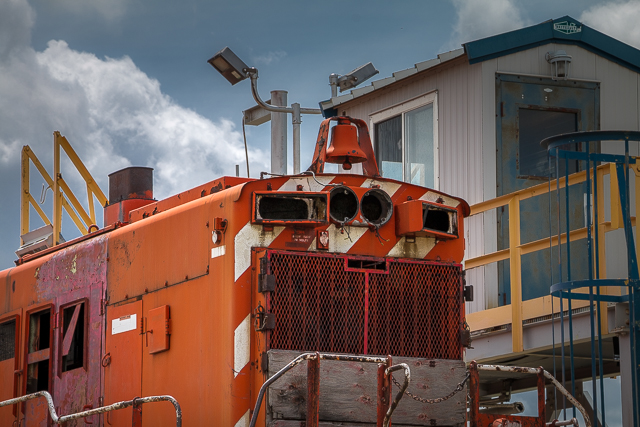
Front end details.
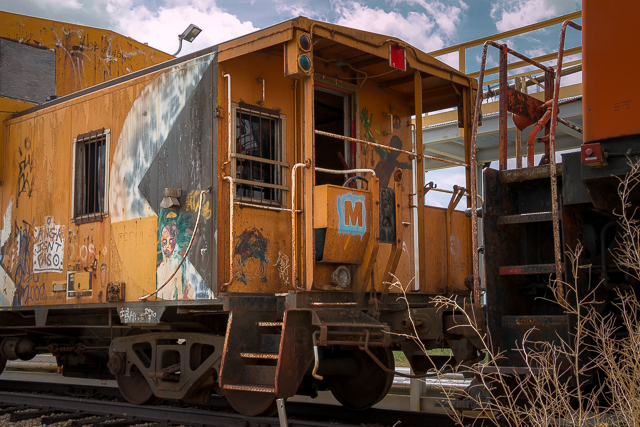
Weather worn, well beaten up and tagged.
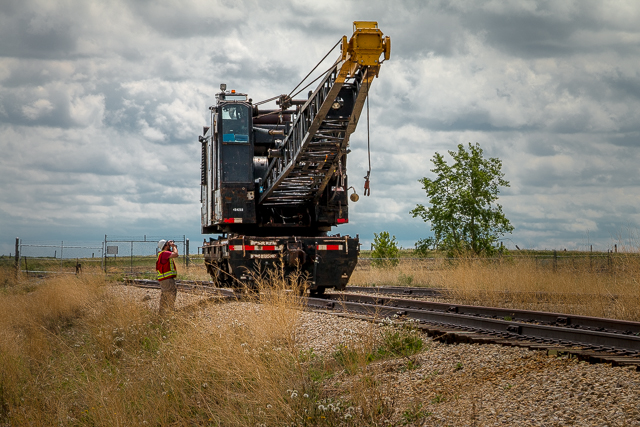
Joining us, Jason Sailer.
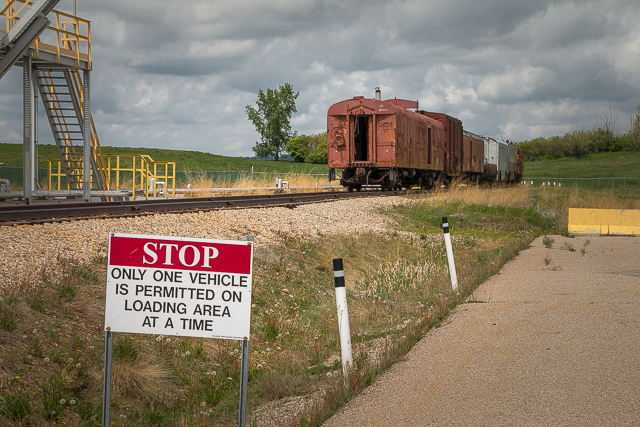
And time’s up.

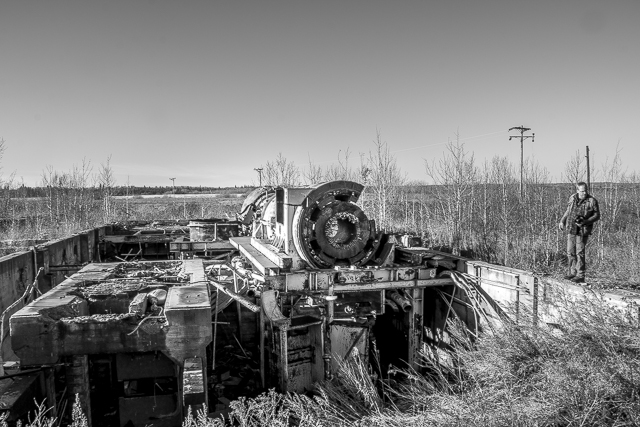
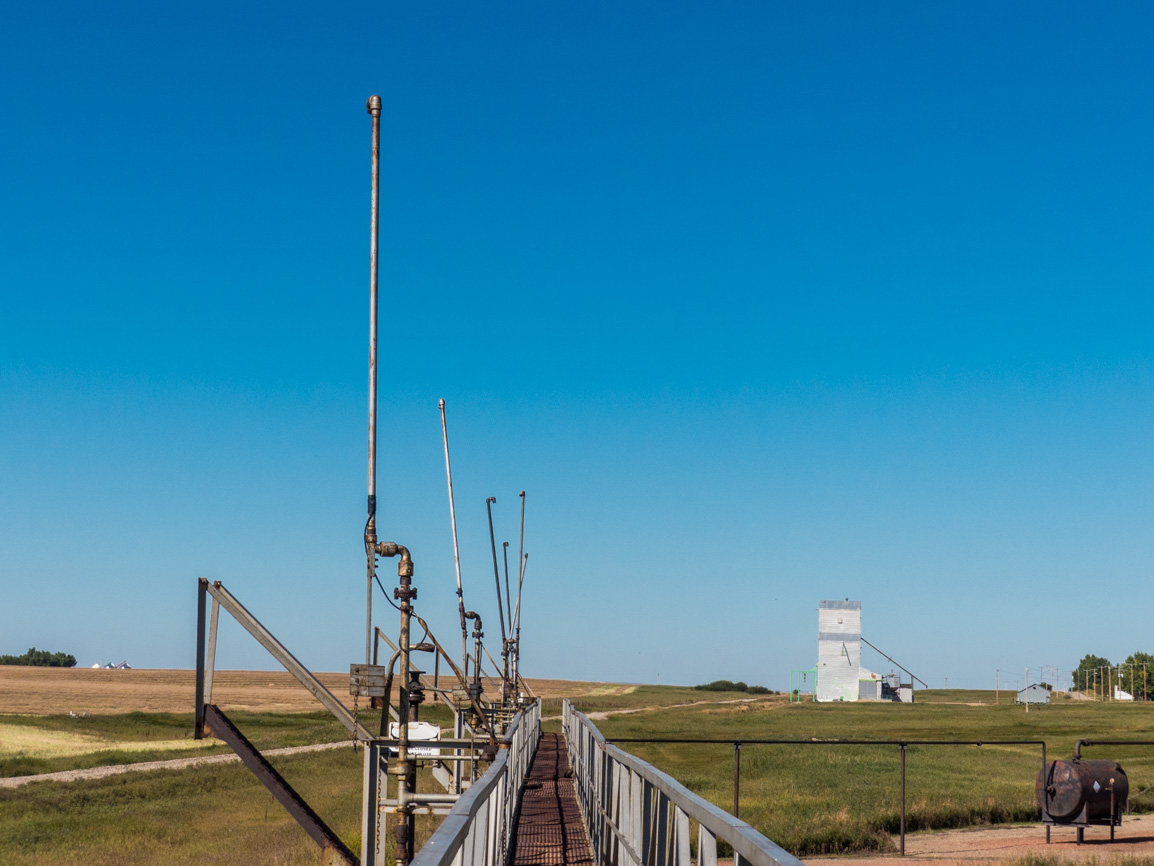
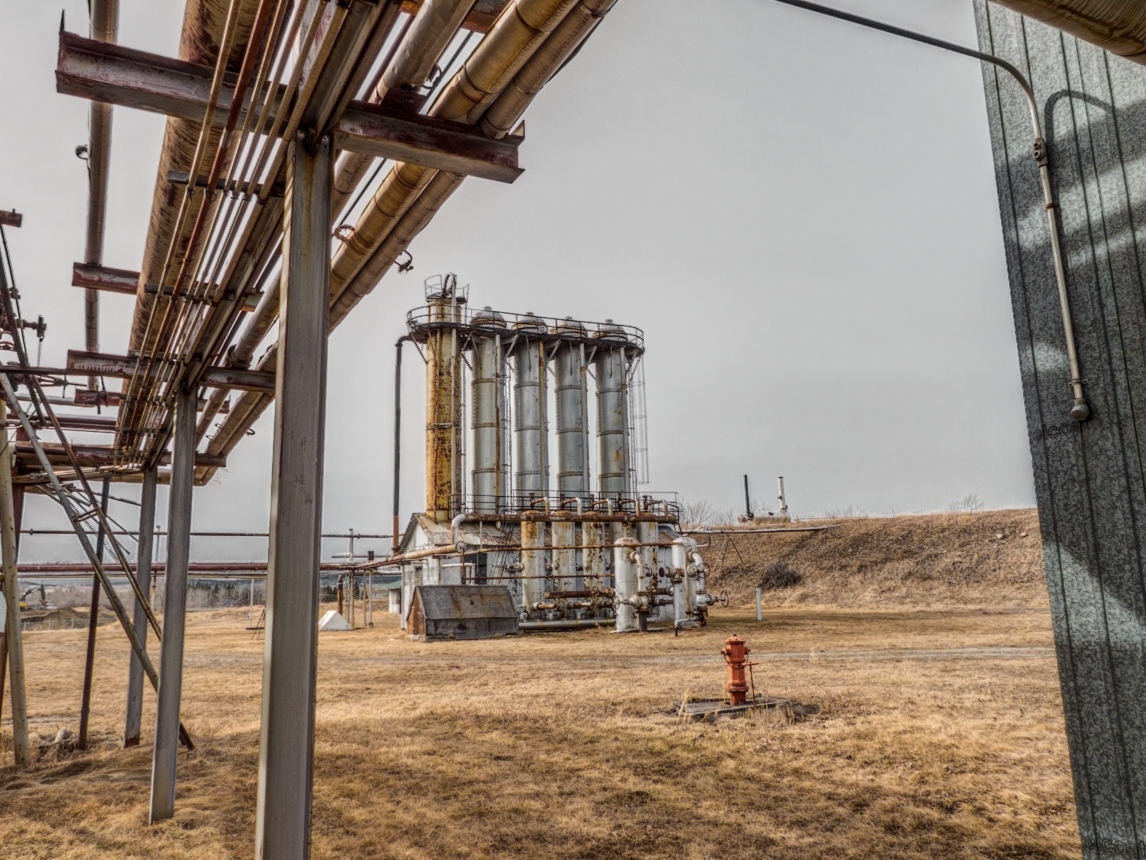
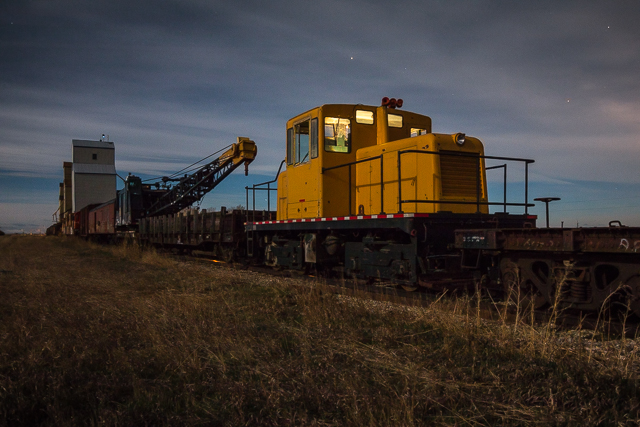
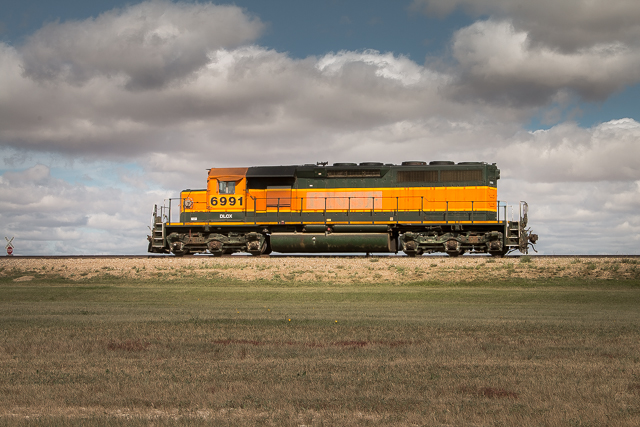
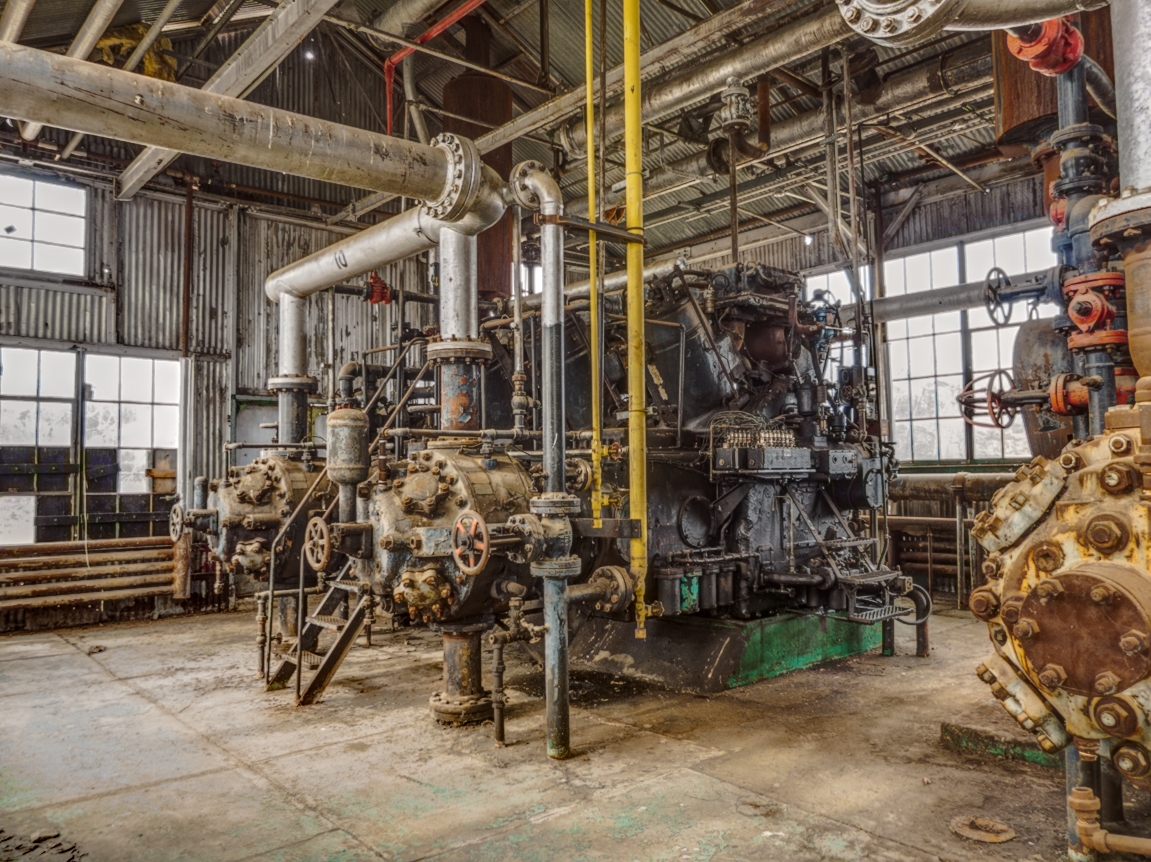
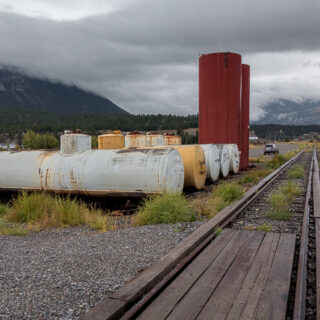
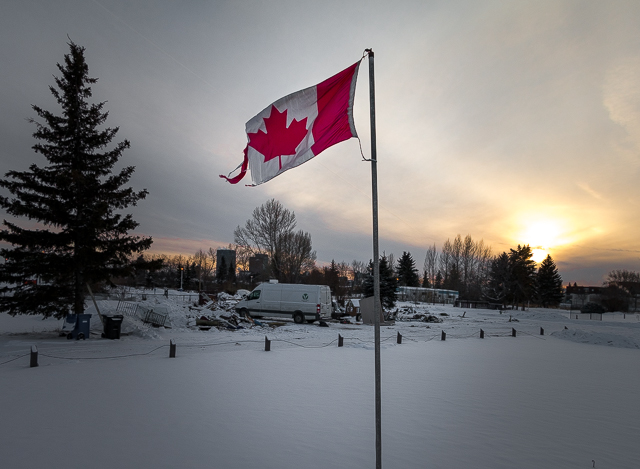
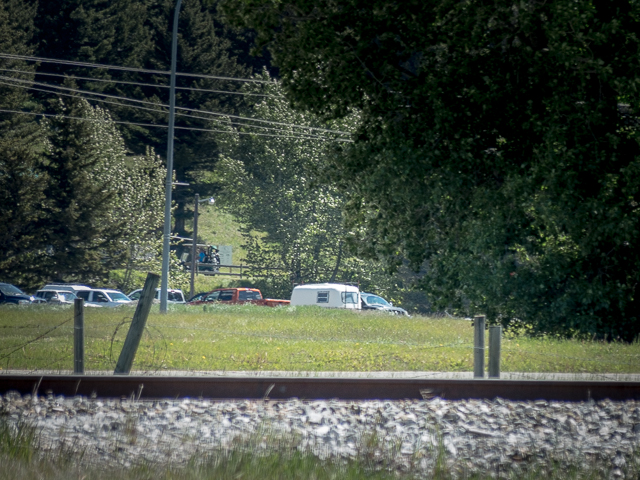
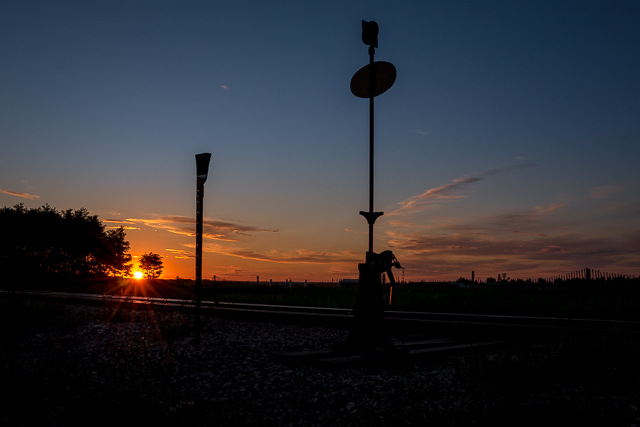
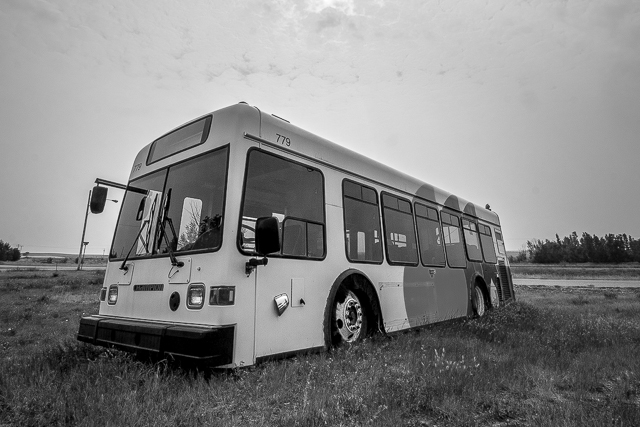
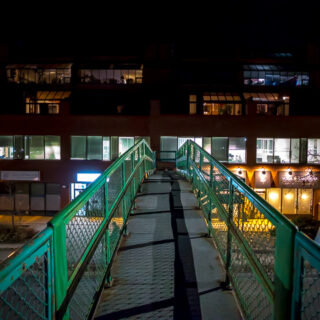
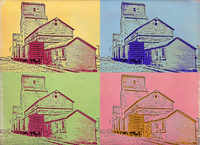






Beautiful pictures and story Chris!
Thank you. Interesting timing as this very day, we’re due to go back into the plant to check on some stuff for the owner of the CLC locomotives.
I thought these were all long gone! Thanks for sharing! I’ve been fascinated by these after reading an article about them in Trains of the 1970’s. A special issue of classic trains.
They’re here, they’re safe for now, but it’d sure be nice to see them in a museum and getting a little TLC. But that takes mucho $$$.
Poor FM, she’s a rare one.
Uber rare. One in Canada, two in Mexico and that’s it.
Saw those BCR slave/robots unit in operation years back when I worked for the railway. Half recall taking a walk through one but that would have over 30 years ago.
Wow, cool memories. I saw a few photos of these two while in service.
Would be cool to see it move under it’s own power and what it would sound like. EMD and GE’s have their own distinct sound.
The H16-44 is mostly complete so I guess with some money (lots of it) could be made to run.
This (H16-44) was at Southern Alberta Institute of Technology’s SW Calgary Campus in around 2002-2003 as I saw it there.
Yes, I remember that now. On the spur leading into the old (Totem I think) lumber yard.
Great post! Thanks for sharing!
Thanks and you’re welcome!
…Seems I heard there was some jeopardy to these due to the scandalous mismanagement of the facility by former operator Lexin, which left a process waste spill on the floor of the plant for several years. I’m having a hard time getting current info, but somehow I don’t think the environmental cleanup process would be protective of rare locomotives…This is the only H16-44 in Canada. There are none in the US. There are two in Mexico, though one, ChP 524, is up on the side of a mountain, at 27°15’31.7″N 108°15’31.5″W. Another, ChP 525, is parked between the former track and the street in the middle of Nuevo Casas Grandes, Chihuahua, Mexico, just a few blocks north of a former wye converted to roads and other non-rail uses, but still evident from above.
The bankruptcy trustee did eye them up for a time, seeing them as scrap metal that could help pay down debt. But they were soon set straight. Yes, the plant was made a mess by the last operator both financially and operationally. It was so bad the government moved in to oversee the decommissioning of it. It’s they who allowed us in. Yes only two other H16-44s. Rare beasts indeed.
They should convert that property to a train museum.
Well, the cars and locomotives should be in a museum. A decommissioned gas plant is not a good venue for showing these types of things off. Till they can find a home, and be fixed up, so they wait in storage.
These photos are all so strangely edited. They look surrealistic and almost fake as though paintings.
You should see the photos from our embarrassing HDR phase. Now those look like paintings! Hmmm, not really sure what to say. Maybe your monitor is off? Or perhaps the wide angle field of view (intentional = 16mm super wide), which comes with a bit of distortion, threw you off? Or maybe our work is just not your thing. Sorry if it’s that.
Superbly done and this fellow has no idea of what he’s talking about.
Thank you very much! And not everyone’s going to like what we do (or anyone does), so it’s no biggie.
Wonderful series of photos and great narrative to boot. Thanks so much for putting it all together.
Have found myself often dreaming about wandering out your way from Vermont. Maybe some day!
Great news about Connies recovery. That’s the most important thing of all. Very happy for you both.
John Hinckley
Burlington, VT
John, so nice to hear from you. Glad you liked the piece – we really liked presenting it. You’d love it up this way. And thanks for thinking of Connie – boy was that a weight lifted. She’s doing good and it was the best possible outcome considering, so we’re happy. Have a great week!
You might want to do a little editing, BC Rail never made it to Prince Rupert.
(Ed: we had mistakenly called Prince George in the article, Prince Rupert – since fixed)
Someone messaged us that before. Doh, brain fart! Thanks for pointing it out though.
Nice images!
Thank you! It was a fun outing and that meant for some good photos (we’ll that one guy didn’t like them).
Now, that would be something to try to save! The B unit is more rare than the H16, but both are extremely rare. Great find, and thanks for sharing!
These are the only two B units, but they’re shells only. The H16-44 is one of three in the world but the only one in Canada. The other two are in Mexico. Glad you liked the piece!
That’s a great catch. FM locos!!
It took some work to get to see them. Aren’t they the coolest ever?
Great photos & phenomenal finds.
Thanks so much. It was amazing to see these in person.
So why are they rotting?
Money. It takes money. Lots of it. Till then they sit in storage.
You two are amazing! I know you do it out of love and a deep passion and for that we’re all in your debt.
Murray McLauchlan: These days when everyone’s taking so much, there’s somebody giving back in.
Please, don’t ever stop.
Comment of the day! Blushing…yes, it’s because we love doing it and nothing more. Some people think we make an income at it. What are they smoking? In fact, we almost loose our shirts doing this. But it needs to be done. and we’re the ones elected to do it. Thank you.
Found it on Maps, nice pictures! Thank you 🙂
Glad you like the pics. The plant is easy to find on Maps. Cool collection there!
I hope one day that unique FM train with an original body is restored. It must NOT rust away forever nor left forgotten forever!
If the money could be found. No small task. But for now it’s safe.
Another great find!! I hope the owners are able to find some cash to do at least some cosmetic restorations. Most of these relics end up on the scrap heap unfortunately. Preservation IMO is a relatively new thing in the railway world or we would already have “the past” preserved and stored securely to serve many generations to come. It is only after the fact that mankind tries to catch up to the past.
You guys are awesome!!
They’ve been searching high and low for funding but so far have come up empty. It’s a big hill to climb. There’s little spare cash and sadly interest in preserving history is not forefront in many people’s minds, so there’s little support. In the meantime, at least it’s safe. Yes, many only think about history after it’d gone. And for that last comment, we say “big thanks” while blushing. Glad you like what we do – and we so love doing it and sharing with you all.
Is the locomotive a Train Master?
No, it’s a H16-44. A Train Master (or TrainMaster) looks similar but is larger and with more wheels, 12 vs 8 for the one seen here.
Fantastic photos of a place few people could ever see.
We do get to go so many special places.
Fascinating story and images, thanks for sharing!
Any time and you are most welcome!
Love those FM units.
They’re pretty special and we’re so honoured, and tickled pink, we were allowed to photograph them.
It was a fun time!
Fun off the scale!
A fun day with Chris!
Super fun! What a great adventure and you’re always welcome to join in.
Neat stuff!
I know! So much epic stuff in the plant.
I love the photographs. They inspire me to get out and shoot more.
We love how they turned out. The sky, the colours that popped, it was all nice. Get out there and snap away, yes. And we’ll join you sometime or you us, or whatever. It’s always more fun that way.
Great photos and info as usual BigDoer!!
Thank you – it was so amazing to explore this collection. And the sky was nice too!
More on the ACI label: en.wikipedia.org/wiki/KarTrak
Why thank you. That’s so interesting!
A great day checking out some vintage railway equipment! Loved every minute of it, thanks for the invitation!
Some spectacular train stuff for sure, and yes so much fun. And you’re always welcome to join us!